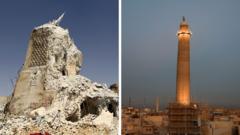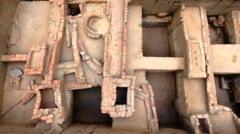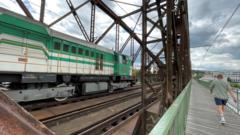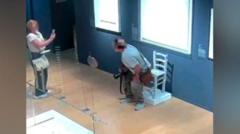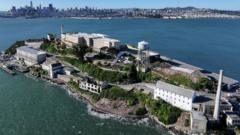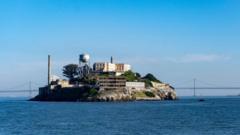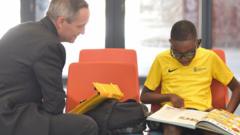In a moment of hope and renewal, Mosul, once a symbol of coexistence among diverse cultures, is witnessing the revival of its historic landmarks. Following the horrors inflicted during the Islamic State (IS) occupation, which lasted from 2014 to 2017, the important project aimed at restoring churches, mosques, and architectural heritage has gained momentum, thanks to the support of Unesco and international partnerships.
Unesco’s director-general, Audrey Azoulay, will attend a ceremony marking the resurgence of these historical structures, where local artisans and representation from various faiths within the community will unite to celebrate this significant milestone. The notorious rule of IS turned Mosul into a battlefield, severely impacting its rich cultural fabric and leading to the destruction of about 80 percent of its Old City.
Photographer Ali al-Baroodi remembers the devastating scenes he encountered after the city was liberated, describing it as a "ghost town." Having once towered over the skyline, the iconic al-Hadba minaret was left in ruins, leaving residents in a state of disbelief and despair over the changes wrought upon their beloved city.
Since the liberation, the arduous work to restore both structures and community trust has commenced. Unesco has mobilized substantial resources, amounting to approximately $115 million, largely sourced from contributions by the UAE and the EU, to fund the restoration of over 124 homes and significant religious buildings.
Father Olivier Poquillon, a Dominican priest involved in the reconstruction of al-Saa'a (the convent), emphasized the importance of mending community relationships, stating that rebuilding trust is pivotal to ensuring that the restored sites are no longer viewed as targets of division but rather as symbols of integration.
Chief architect Maria Rita Acetoso, who led the project, highlighted that the effort is not merely about repairing buildings. It aims to offer skills development and jobs, nurturing a sense of shared purpose and eventually fostering a recovery of cultural identity for current and future generations.
The project has seen more than 1,300 local youths trained in traditional restoration crafts, yielding approximately 6,000 new jobs in the region. Many classrooms have also been renovated. Al-Tahera Church has resumed ringing its bells after its restoration, serving as a poignant reminder that Mosul’s religious heritage is once again alive.
Residents, like Mustafa, who returned to their ancestral homes after years of displacement, vocalize a mix of joy and gratitude upon witnessing the revitalization of their neighborhoods. Abdullah narrates his cherished journey back to his family home, feeling profound relief at seeing it restored after fearing permanent loss.
As Mosul continues its healing process, the city embodies the hope that such efforts can not only revive the architecture but will also rejuvenate the spirits of those who endured the trials of conflict. Photographer Ali al-Baroodi encapsulates the transformation, remarking on the beautiful renaissance of his homeland, as it rises, phoenix-like, from the ashes of despair into a vibrant community once more.
This restoration serves as a beacon of resilience, illuminating the road towards a future marked by peace and harmony in a place that has, in the past, endured unimaginable trials.
Unesco’s director-general, Audrey Azoulay, will attend a ceremony marking the resurgence of these historical structures, where local artisans and representation from various faiths within the community will unite to celebrate this significant milestone. The notorious rule of IS turned Mosul into a battlefield, severely impacting its rich cultural fabric and leading to the destruction of about 80 percent of its Old City.
Photographer Ali al-Baroodi remembers the devastating scenes he encountered after the city was liberated, describing it as a "ghost town." Having once towered over the skyline, the iconic al-Hadba minaret was left in ruins, leaving residents in a state of disbelief and despair over the changes wrought upon their beloved city.
Since the liberation, the arduous work to restore both structures and community trust has commenced. Unesco has mobilized substantial resources, amounting to approximately $115 million, largely sourced from contributions by the UAE and the EU, to fund the restoration of over 124 homes and significant religious buildings.
Father Olivier Poquillon, a Dominican priest involved in the reconstruction of al-Saa'a (the convent), emphasized the importance of mending community relationships, stating that rebuilding trust is pivotal to ensuring that the restored sites are no longer viewed as targets of division but rather as symbols of integration.
Chief architect Maria Rita Acetoso, who led the project, highlighted that the effort is not merely about repairing buildings. It aims to offer skills development and jobs, nurturing a sense of shared purpose and eventually fostering a recovery of cultural identity for current and future generations.
The project has seen more than 1,300 local youths trained in traditional restoration crafts, yielding approximately 6,000 new jobs in the region. Many classrooms have also been renovated. Al-Tahera Church has resumed ringing its bells after its restoration, serving as a poignant reminder that Mosul’s religious heritage is once again alive.
Residents, like Mustafa, who returned to their ancestral homes after years of displacement, vocalize a mix of joy and gratitude upon witnessing the revitalization of their neighborhoods. Abdullah narrates his cherished journey back to his family home, feeling profound relief at seeing it restored after fearing permanent loss.
As Mosul continues its healing process, the city embodies the hope that such efforts can not only revive the architecture but will also rejuvenate the spirits of those who endured the trials of conflict. Photographer Ali al-Baroodi encapsulates the transformation, remarking on the beautiful renaissance of his homeland, as it rises, phoenix-like, from the ashes of despair into a vibrant community once more.
This restoration serves as a beacon of resilience, illuminating the road towards a future marked by peace and harmony in a place that has, in the past, endured unimaginable trials.

